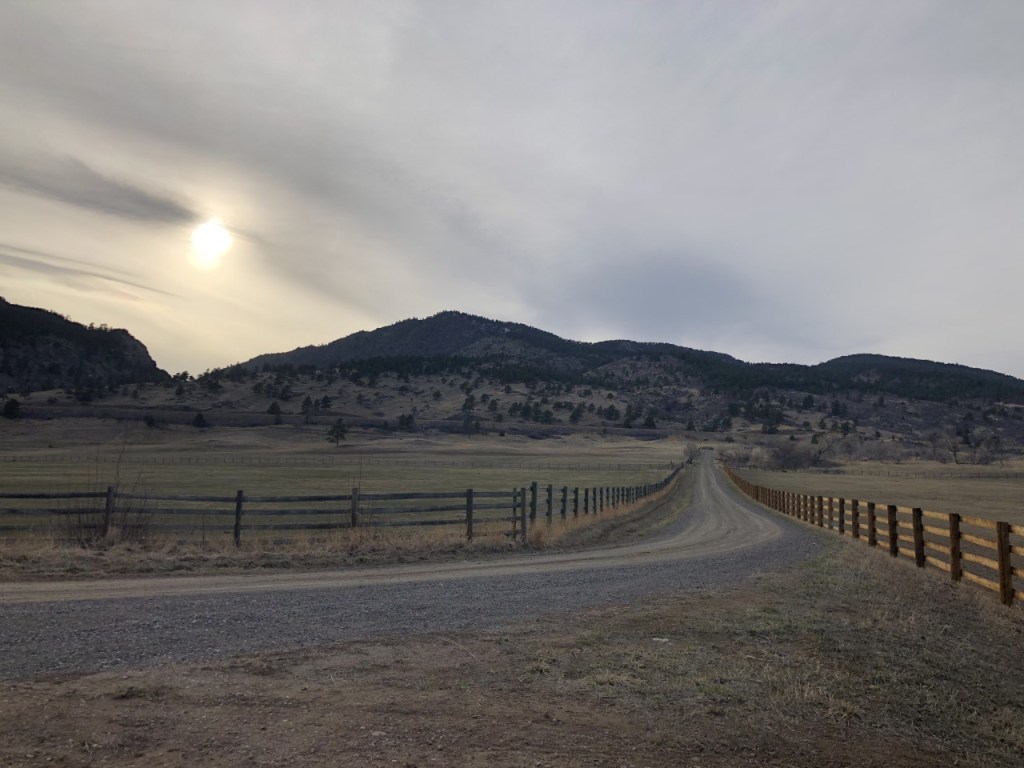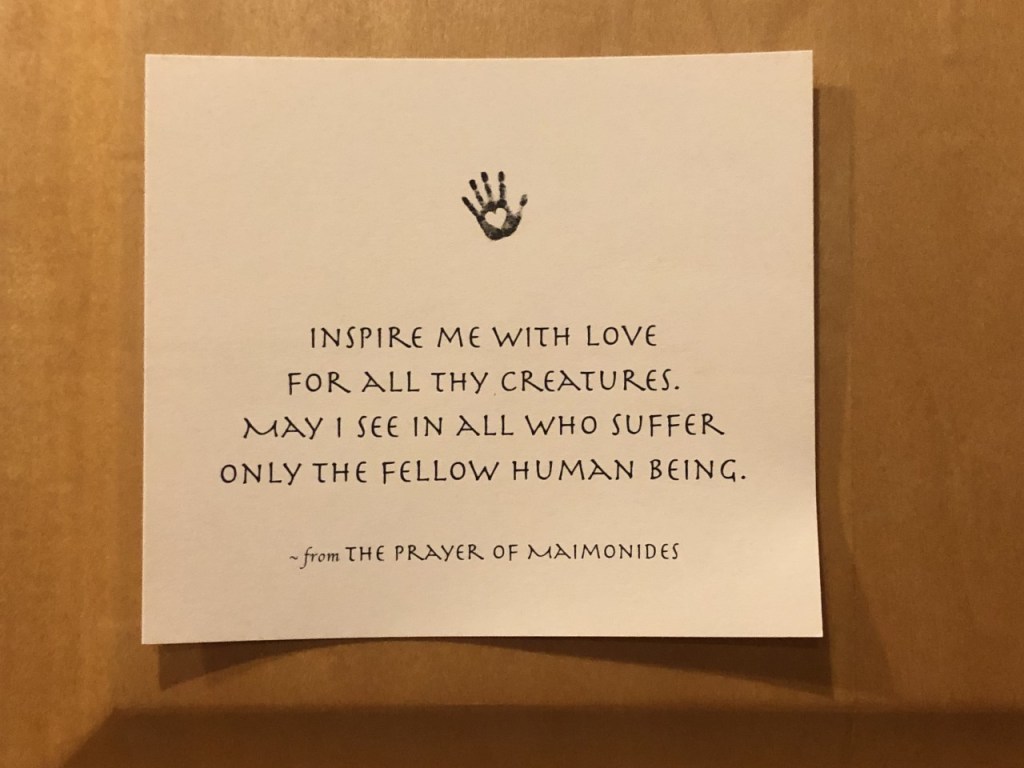
“I can’t imagine…”
“I can’t understand…”
“I can’t relate…”
“I would never…”
When you think or say these phrases, what is the context? What message are you harboring, or trying to convey—connection or distance, or something else?
Can you truly not imagine, understand, or relate? What if you tried harder (or at all)? How would it affect you if you could imagine, understand, and relate, or if you would ever, under certain circumstances? How would this altered relationship to the situation (and person) feel?
I have written before about what happened when I said, “I can’t imagine” to a black classmate. It was humbling. I submit that we could all humble ourselves a little more these days.

My last pre-pandemic solo trip was to Loveland, Colorado, for the last retreat of Leading Organizations to Health, Cohort 11. It feels cosmically fitting for my first solo trip since COVID to be a return for the first in person LOH alumni gathering in this time, last weekend. OMG, friends, it was the next best thing to going home. Other than our leaders, I had only met my fellow alums over Zoom these last two years. And now I have 8 amazing new friends. Though separated by occupation, specialty, generation, and geography, we all speak fluently the as yet rare and reverent language of relationship-centered leadership. This is my tribe.
We start our sessions with poems. Please Call Me By My True Names by Thich Nhat Hanh spoke deeply to me, especially these lines:
I am the twelve year-old girl, refugee in a small boat,
who throws herself into the ocean after being raped by a sea pirate,
and I am the pirate, my heart not yet capable of seeing and loving.
Whoa.
I have written on this blog many times about seeking, honoring, and really exercising our shared humanity —35 posts appear when I search the site for the phrase. Even since I started blogging 7 years ago, though, it feels ever more urgent that we practice this every day.

This week my good friend Donna asked me to re-articulate my Why. Again, I’m sure it was cosmic inspiration that moved her. Have I ever written my Why statement here? It was ‘to optimize relationships with and between all people I meet.’ And by optimize I meant to make more understanding, more connecting, and more meaningful. Today, I think I have to be much more specific:
My Why is to help us all see at least a part of ourselves in every person we meet.
I intend to practice and model this first myself—to really internalize the truth that I am myself and also every other soul—that we are all born with the same needs, the same aspirations, the same set of possibilities. Each of our unique, complex constellations of birth circumstance lottery, serial life experiences, and intrinsic wiring shapes us in ways we can only partially understand in our thinking brains. What we have not the capacity to think or speak, often can only be felt. And when we contact another soul who has also felt what we feel, or who can imagine, understand, or relate in some way, WOW, how healing is that? I bet we can all recall at least a few instances when those deep, meaningful connections occurred across apparently wide gaps of background, class, or other social construct. And why do we remember? Because we were moved, alerted, and maybe a little alarmed? Or maybe we have forgotten, because to come too close to someone’s experience that makes us uncomfortable can trigger a distancing reflex—self-image-protecting, perhaps.
In recent years I have internalized the admonishment to never say, or really even think, “What is wrong with you?” Rather, I remind myself to ask, “What happened to you?” In every context, this one switch opens the door to curiosity, imagination, understanding, relationship, and connection. It allows space for our deeply shared humanity to surface and teach me what I need to know, or at least to prompt humility ahead of blind judgment and dismissal. Substitute “them” for “you” in these sentences, and see how easily and willingly we throw away whole groups of people with our in- and out-group identities and ideologies.
May we all see a part of ourselves in every person we meet, especially the ones who make us say, “I can’t imagine, I can’t understand, I can’t relate, and I would never…” Let that seeing move us to put down our judgments and take up empathy, compassion, and connection instead. We will all be better for it.

I am close to turning 70 and retired but I find learning these skills will be beneficial to all and any.
LikeLiked by 1 person
Hi Patty,
Thank you for reading and commenting. How do you see these skills showing up (and not) in interactions you either witness or participate in these days?
LikeLike
Well my spouse came out as transgender 2018 and we are staying together and for me I have to ask myself hard questions as to how I see people. found out I judged way too many. learning to not assume and to ask questions. i want to be inclusive and work with new answers that bring about acceptance and healing to each person
LikeLiked by 1 person
Wow that is a big deal. Best wishes to you both, and may your communities hold you up. 🙏🏼
LikeLike
So beautifully stated, especially the shift from “what’s wrong with you?” to “what happened to you?”
LikeLiked by 1 person
Thank you John!! That change made a big difference for me.
LikeLike
Thank you for this post; it really helps reset our perspective.
LikeLiked by 1 person
Thank you VJ!
What is the most relevant change that would happen if someone near you reset like this?
LikeLike
As a person living with chronic illness, I find myself often judged by others – usually a projection of their own fears. For me, a shift in perspective would mean that I don’t have to defend or apologize for myself.
LikeLiked by 1 person
Projection, oh yes. If only we were all more aware how often and unconsciously we do this. 😦 *sigh* So for those who judge me, I can relate by remembering when and how I judge others, and then judge them less harshly for judging me… and then practice some self-compassion for not being the perfect non-judger, and continue self-monitoring and trying my best… ;P
LikeLiked by 1 person
Pingback: Calling All Depolarizers! Part 1: Who Are They (We)? | Healing Through Connection